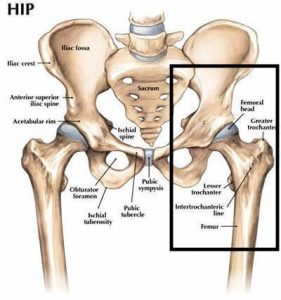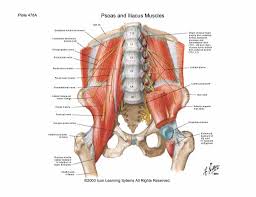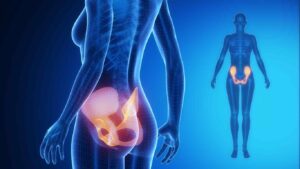Has your patient presented with Hip Pain?
 Hip Pain may present laterally around the greater trochanteric region or more commonly in the anterior groin.
Hip Pain may present laterally around the greater trochanteric region or more commonly in the anterior groin.
A major cause of pain in the anterior aspect of the hip joint is termed femoroacetabular impingement or FAI for short.
So what is FAI syndrome?
 It is described as a motion related disorder of the hip. Due to an abnormal shape of the hip and/or acetabulum (socket on pelvis where the hip fits in to) abnormal contact can be made between these two structures, especially during movements of flexion and internal rotation. This repetitive contact may cause tissue damage and pain.
It is described as a motion related disorder of the hip. Due to an abnormal shape of the hip and/or acetabulum (socket on pelvis where the hip fits in to) abnormal contact can be made between these two structures, especially during movements of flexion and internal rotation. This repetitive contact may cause tissue damage and pain.
For a diagnosis of FAI syndrome to be confirmed the patient must have;
- symptoms,
- positive with clinical testing
- AND findings on imaging.
Symptoms
The primary symptom of FAI syndrome is motion-related or position-related pain in the hip or groin, usually movements of flexion and/or internal rotation of the hip. Pain may also be felt in the back, buttock or thigh. In addition to pain, patients may also describe clicking, catching, locking, stiffness, restricted range of motion or giving way.
Clinical Tests
There are tests to preform to assist with the diagnosis. These tests usually stress the hip and place it in positions of impingement (flexion/adductor), assessing for reproduction of symptoms and impairment in movement.

Imaging
An x-ray of the pelvis and symptomatic hip should initially be performed to obtain an overview of the hips, identify cam or pincer morphologies, and identify other causes of hip pain. Where further assessment of hip morphology and associated cartilage and labral lesions is desired, an MRI or CT scan may be appropriate.
Treatment
FAI syndrome can be treated by conservative care, rehabilitation or surgery.
Conservative care may involve education, watchful waiting, lifestyle and activity modification. Physiotherapy-led rehabilitation aims to improve hip stability, neuromuscular control, strength, range of motion and movement patterns.
If conservative care and rehabilitation does not have a significant impact on symptoms and function the surgery, either open or arthroscopic can be considered. The aim of surgery is to improve the shape of the hip and repair damaged tissue. The good management of the variety of patients with FAI syndrome requires the availability of all of these approaches.
Prognosis
In patients who are treated for FAI syndrome, symptoms frequently improve, and they return to full activity, including sports.
Without treatment, symptoms of FAI syndrome will probably worsen over time. The long-term outlook for patients with FAI syndrome is unknown. However, it is likely that cam morphology is associated with hip osteoarthritis.

































